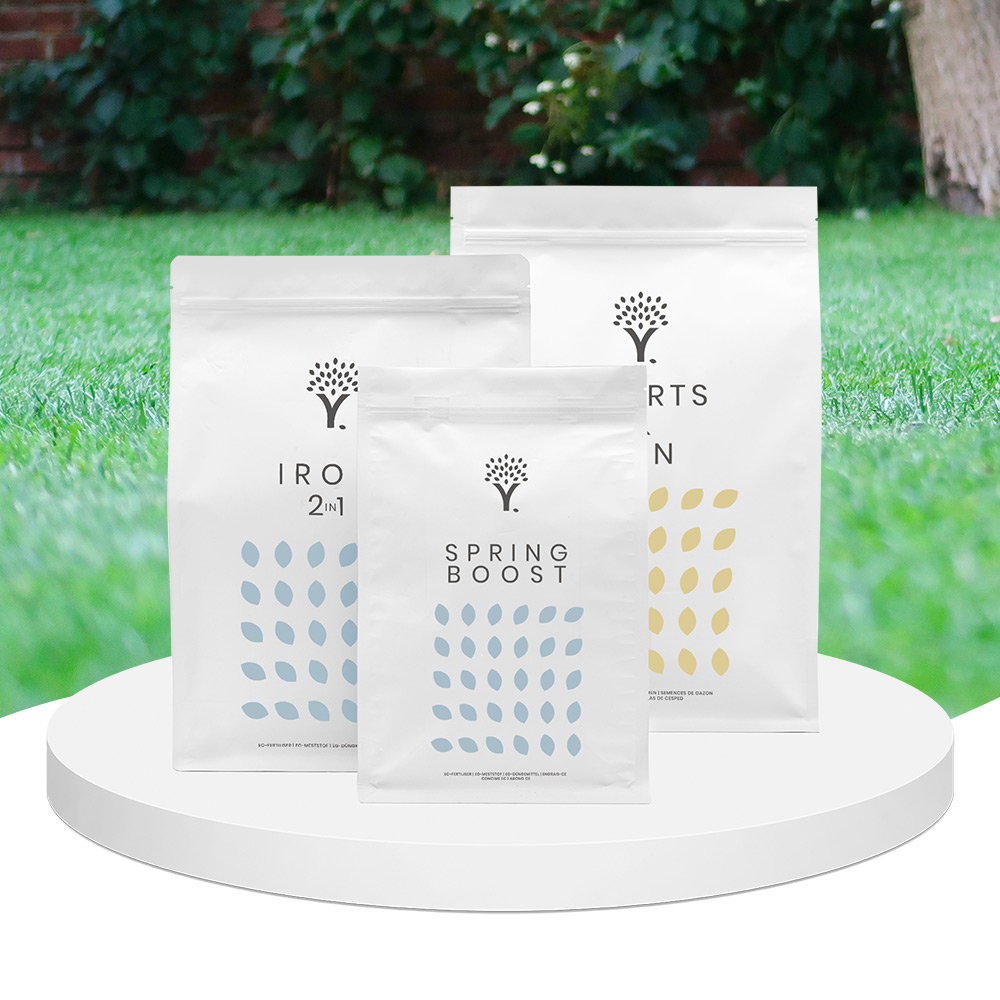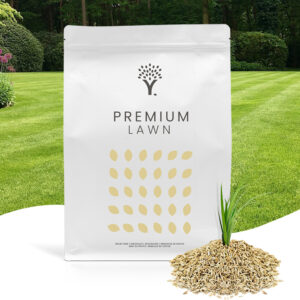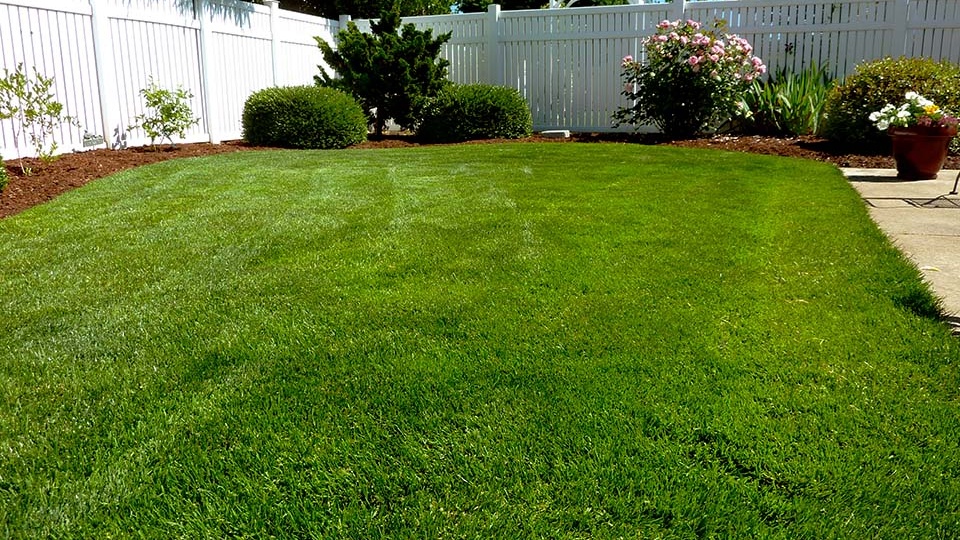Log in or create new account to save this product to your wishlist.
Removing Old Turf: why, when, and how?
How to remove turf - it's a fairly straightforward task, but it's physically challenging. Find out how to remove turf and what to do next!
Latest articles
7 MIN 22 Jul How to keep your lawn in shape this summer 9 MIN 15 Jul Watering Your Garden: 10 Top Tips! 11 MIN 15 Jul Is Your Grass Type Right for your Garden? 11 MIN 10 Sep Create Your Low-Maintenance Garden – Tips and Ideas 11 MIN 08 Sep The Ultimate Guide to Choosing the Perfect Hedges for Your Garden 12 MIN 30 Aug The Top 20 Evergreen Climbers to Transform Your GardenIt might seem like an odd article for a lawn expert’s website, but sometimes your lawn is beyond repair. And in that case, there’s only one solution: remove the old turf to make way for a new lawn. But do you know how to remove turf?
- Why would you remove your grass?
- Digging your grass vs turning it over
- Should I remove my grass myself (or outsource it)?
- How to remove old grass
- Removing old grass with a spade
- Removing old turf with a sod cutter and cultivator
- Loosen the soil
- How do I dispose of the old grass?
- What do I do if the old grass grows back?
- How do I get a fresh lawn?
- Any questions?
Removing old grass is a labour-intensive job, which may feel intimidating. But it is entirely possible to do it yourself, but maybe after reading HOW to remove turf, you might think about getting a professional in.
I mean, where do you put the old grass? And what do you do after removing the old grass?
This article will explain how to remove turf easily, with a clear plan for restoring your lawn in easy steps.
Ready? Let’s get started.
Why would you remove your grass?

It’s a good question, but there are several reasons to remove old turf. Perhaps your grass has suffered years of poor maintenance or disease, past the point of no return.
Maybe you inherited your lawn when you moved into your new home. Or perhaps you’ve been staring out of the kitchen window for years and never done anything about the sorry state of your grass.
Or you might even be considering building some new flowerbeds, a patio or a terrace where grass once thrived.
Whatever your reasons, removing your old grass and replenishing your turf are great ways to transform your garden’s aesthetics.
Digging your grass vs turning it over
You could use a rotavator to churn up your existing lawn, readying the ground for new turf or grass seed. But while this will undoubtedly disturb and damage most of the roots, some of the networks will remain intact, so your old grass will likely return.
So, it might be better to dig out the roots of your existing lawn and remove the grass plants altogether. This is particularly beneficial if your lawn has suffered from pests or diseases.
Completely removing your old grass plants always provides the best results. Any grass that becomes loose during the dig returns to the soil, decomposing over time, which can help prevent the subsoil from sinking or resettling unevenly.
Should I remove my grass myself (or outsource it)?
Removing your old grass isn’t difficult, but it’s physically demanding.
So, if you feel you’re not up for the considerable elbow grease required for the task, hire someone in. They’ll have all the right tools and will clear the mess up after they’ve finished.
Lawn doctor Louis says:
The grass that comes loose during digging ends up back in the soil, and will eventually decompose. This can prevent the subsoil from sinking.
How to remove old grass
You’ve decided to do it yourself! Good on you!
So, how do you handle the task? Well, you can remove your grass manually or by machine.
I’ll explain both approaches.
Removing old grass with a spade

You can remove your old grass with a spade if you have a small garden. And while it’s a labour-intensive job, you don’t need any other tools — just a spade.
First, cut squares into your turf (around 30cm²) across the lawn surface. This will ensure you dig out the roots – dig down around 8cm to remove most of them.
Then, slice the upper surface of the turf away with the spade, disposing of the old sod in your compost bin — old turf makes excellent compost.
Continue until you’ve removed all of the grass.
Removing old turf with a sod cutter and cultivator

To clear more substantial lawns, use a sod cutter, which rolls over the grass like a lawnmower but cuts away the top layer of soil. This allows you to roll up the unwanted turf for disposal neatly.
A sod cutter does all the hard work for you — you just have to guide it around the lawn.
However:
A sod cutter may leave the roots in the soil, which means that your old grass will grow back. So, use a milling cutting (or cultivator) to cut through the root layer and crumble the soil.
Leave the soil for a few weeks to allow old pollen to decompose. This also makes time to ensure the ground is weed free before you lay your new turf or sow high-quality grass seed.
You can rent a sod cutter and a cultivator from your local hardware hire company. Or find out if you have a local Library of Things — many cities are introducing these lending services to help reduce waste while helping the community access items they wouldn’t typically own.
Loosen the soil
If you’re creating a new lawn, loosen the upper 5-10cm of topsoil after leaving it to rest. This aerates the earth, allowing new seeds to establish roots more freely.
You can turn the topsoil over with a garden fork, but it might be easier to use a cultivator if you have heavy soil. Alternatively, a rotavator might be easier to use because it has wheels.
How do I dispose of the old grass?
You can use your green bin for organic waste to dispose of small sections of turf and roots. Or old turf makes a nutritious addition to your compost heap.
However, if you have a lot of turf to dispose of, take it to the recycling centre at your local tip. Alternatively, hire a skip for a couple of days, and the hire company will dispose of it for you.
What do I do if the old grass grows back?

If grass starts growing back, you haven’t dug deep enough to remove the old roots. So, remove another layer of soil, ensuring you access all the root networks.
If it’s growing back in patches, remove the roots and level out the surface with fresh topsoil.
How do I get a fresh lawn?
Now you’re staring at a (muddy) blank canvas; you’ll be wondering what to do next. Removing a lawn gives you an excellent opportunity to consider how you might landscape your garden with borders, raised beds, and maybe even a patio.
So, take this opportunity to redesign your garden. Check out our article about inspiring lawn designs for ideas.
However, you’re likely to want a new lawn, of course. And this is where the decision comes: whether to lay new turf or sow new lawn seed. Either way, you’ll need to level out the topsoil first to avoid dips, puddles, and drainage problems in your new lawn.
Find out how to reseed your garden or how to lay turf. And remember, our excellent selection of high-quality and premium lawn seeds is also the choice for FIFA stadiums!
Any questions?
We hope we’ve answered your questions about removing old turf. But if there’s something we haven’t covered, check out our comprehensive Help & Advice section.
Or get in touch, and we’ll reply promptly!
Thanks for reading.
Leave a comment
Your answer will be displayed on the site and the interested party will be notified by email.
Leave a comment
Have a question or want to share your experience? Leave us a comment.
Read more
The best tips and tricks for a lush green lawn
 7 MIN
13 Sep
Lavender Cuttings: a step-by-step guide
7 MIN
13 Sep
Lavender Cuttings: a step-by-step guide
 11 MIN
10 Sep
Create Your Low-Maintenance Garden – Tips and Ideas
11 MIN
10 Sep
Create Your Low-Maintenance Garden – Tips and Ideas
 Scarifying Kit
All products after scarifying | Quickly restores the lawn after scarifying | Outsmart weeds quickly with the use of this kit
From: € 39.99
Scarifying Kit
All products after scarifying | Quickly restores the lawn after scarifying | Outsmart weeds quickly with the use of this kit
From: € 39.99
 Spring Lawn Care Kit
MOOWY’s choice for the spring | Quick recovery of your lawn after winter | A strong lawn prevents weeds
From: € 25.99
Spring Lawn Care Kit
MOOWY’s choice for the spring | Quick recovery of your lawn after winter | A strong lawn prevents weeds
From: € 25.99
 Long Lasting Lawn Fertiliser
Effective for 90 days | See results in 14 days! | Suitable for all types of grass and soil
From: € 13.99
Long Lasting Lawn Fertiliser
Effective for 90 days | See results in 14 days! | Suitable for all types of grass and soil
From: € 13.99
Do you want a lawn calendar?
🌱 All important maintenance moments for your lawn during the year. Leave your email and we will send you the lawn calendar for free.
Enter your email
Receive the lawn calendar in the mail
Enjoy a green lawn all year round!













Comments (0)
There are no comments yet. Well then, what are you waiting for to
Be the first to write your comment!inaugurate this pretty page?
Do you have some comments?